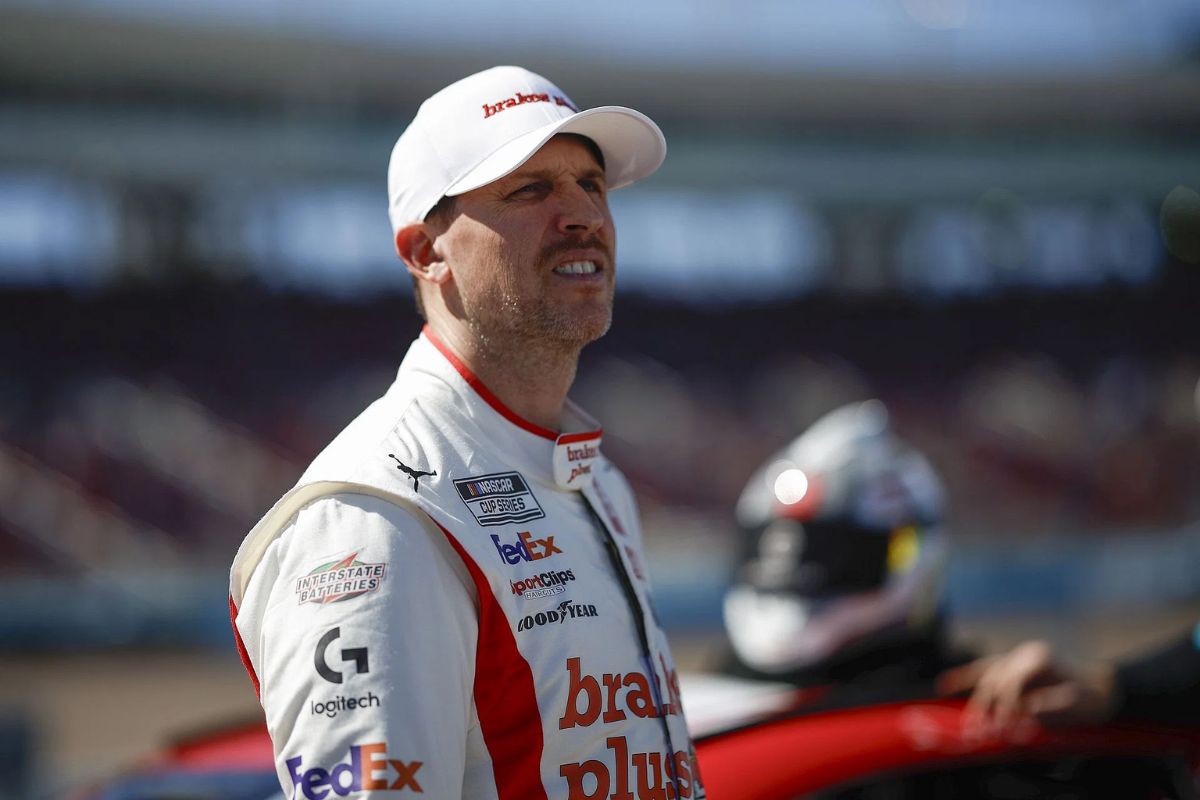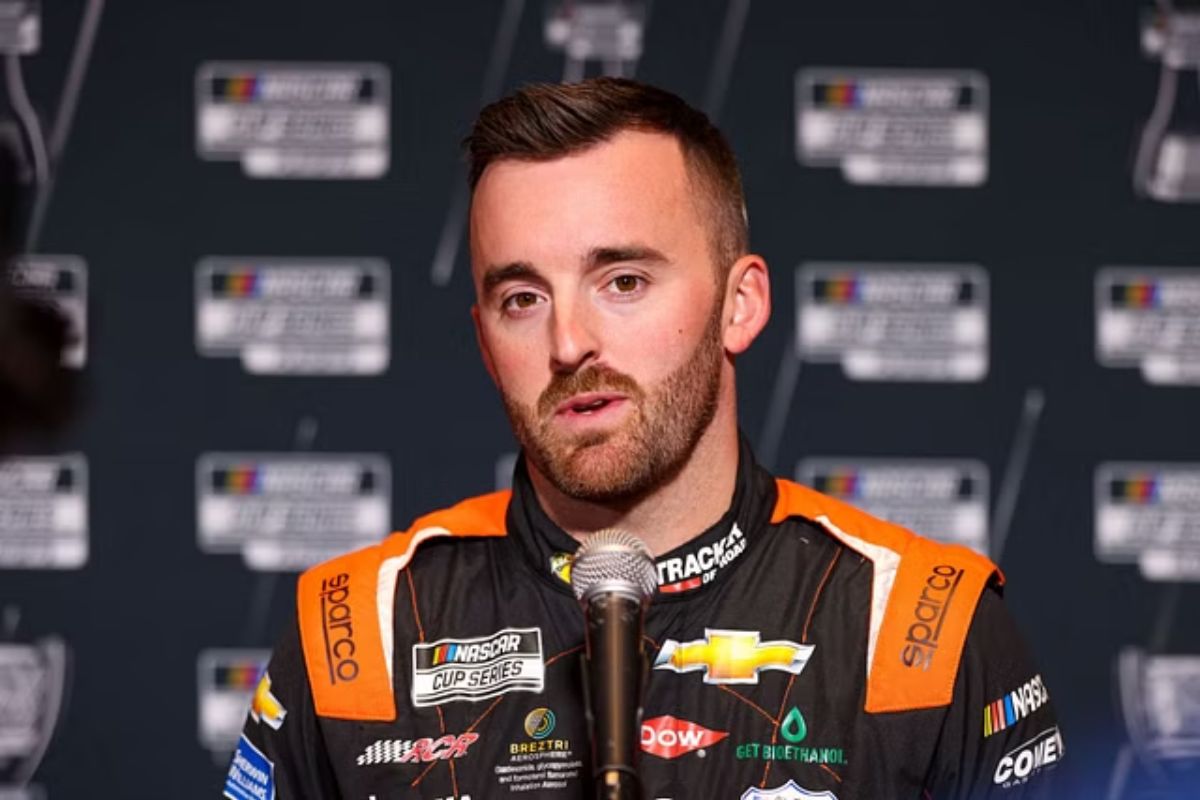Austin Dillon’s Richmond Incident: The recent collision involving Austin Dillon at Richmond has cast a long shadow over Denny Hamlin‘s playoff ambitions, raising questions about the broader implications of on-track conduct in NASCAR. Dillon’s aggressive tactics not only ended his own playoff hopes but also severely compromised Hamlin’s vehicle, igniting concerns regarding both his physical well-being and competitive edge. As the stakes rise, the incident serves as a critical reminder of the fragile interplay between driver ambition and the inherent risks of racing. This situation begs a closer examination of the safety measures in place and the accountability of drivers in high-pressure scenarios.
Key Highlights
- The Richmond incident caused significant damage to Hamlin’s vehicle, impacting his chances in the playoffs.
- Hamlin’s health concerns, including shoulder surgery, were worsened by the chaos at the Cook Out 400.
- The aggressive nature of the Richmond incident heightened rivalries, increasing pressure on playoff contenders like Hamlin.
- Criticism of NASCAR’s safety protocols was amplified after the incident, with calls for immediate improvements to protect drivers.
- Hamlin’s frustration over the incident reflects broader concerns about accountability and aggressive driving tactics in NASCAR.
Consequences of the Richmond Incident
The consequences of the Richmond incident were considerable and multifaceted, impacting not only Austin Dillon‘s race standings but also the broader dynamics of the NASCAR playoffs. Dillon’s spotter’s incitement to “wreck him!” marked a crucial moment, indicating a change in competitive aggression that echoed throughout the series. The immediate ramifications for Dillon were dire; he faced a notable drop in points, shifting from 26th to 31st in the standings, which effectively eliminated his playoff eligibility. This outcome emphasizes the harsh realities of NASCAR’s point system, where a single miscalculation can derail an entire season’s effort.
Moreover, the incident accelerated a chain effect throughout the playoff landscape. As Dillon engaged in on-track aggression, the potential for retaliation and heightened rivalries intensified. The chaotic environment at Richmond not only tarnished Dillon’s reputation but also positioned other drivers, particularly those in contention for the playoffs, under increased strain.
This incident also has broader implications for NASCAR’s regulatory framework. The league’s decision to impose penalties signals a commitment to fair competition and sportsmanship, reinforcing the idea that reckless behavior will not be tolerated.
Fundamentally, the Richmond incident serves as a cautionary tale, reminding competitors of the delicate balance between ambition and accountability within the high-stakes arena of professional racing.

Denny Hamlin’s Health Impact
Navigating the aftermath of the Richmond incident, Denny Hamlin has openly acknowledged the toll it has taken on his health and championship aspirations. The seasoned driver, who underwent arthroscopic surgery on his right shoulder last November, has faced a challenging recovery. The surgery was necessitated by a lingering bone spur that had plagued him for years, ultimately impeding his performance during the preceding season.
Despite an accelerated healing process, the recent chaos at the Cook Out 400 has reignited concerns regarding the durability of his shoulder, further complicating his championship pursuits.
“Yeah…my whole right side you know, just took the hit. When you look at kind of how these Next Gen cars take crashes, really the flat side impact is kind of the worst thing that you can have, ’cause there is no crush there…Actually would have been better to nose it head-on or back it in, because we have the softer bumpers and whatnot now.”-(hamlin)
Hamlin’s frank reflections reveal the intricate relationship between physical health and competitive success in NASCAR. The Richmond incident not only worsen his shoulder issues but also introduced a psychological strain that could influence his performance on the track.
As he navigates this critical point, the impact of physical limitations becomes evident; an athlete’s body is both an asset and a liability. The intersection of physical readiness and competitive stress is particularly acute in a sport where fractions of a moment can determine the outcome.
The implications of Hamlin’s health extend beyond the immediate; they resonate throughout the entire playoff landscape. Each race is not merely a contest of speed but a test of resilience, and Hamlin must reconcile his aspirations with the realities of recovery.
As he continues to contend for a championship, the specter of physical vulnerability looms large, a poignant reminder of the precarious balance athletes must maintain in their pursuit of excellence.
Hamlin’s Reaction to the Richmond Incident
Hamlin’s reaction to the Richmond incident reflects not only his frustration with the physical consequences but also a deeper understanding of the implications of on-track decisions. In the immediate aftermath, he articulated the gravity of the situation, noting the substantial impact on his vehicle’s structural integrity. As he assessed the damage, Hamlin pointed out that the Next Gen cars are particularly susceptible to flat side impacts, which he described as among the worst types of crashes. This insight reveals a keen awareness of the evolving safety dynamics in NASCAR, in addition to the specialized intricacies that can influence driver safety.
“Even though it’s been 8-9 months or so since surgery, the rotator cuffs take forever…I’m not young as I used to be so I don’t recover quite as quick as I used to. Last year, I just kept making the injury worse and worse and worse by continuing to race. This year, it’s getting better each week.”-(hamlin)
Hamlin refrained from attributing blame solely to Austin Dillon and his spotter, suggesting a level of professionalism that highlights the complexities of racing. His decision to avoid outright condemnation speaks volumes about the fellowship and competitive spirit that define the sport, even in moments of personal adversity.
Hamlin’s frank remarks about the physical toll—“Blew my damn shoulder”—reflect an authentic expression of frustration that resonates with fans and fellow competitors similarly. Ultimately, the Richmond incident serves as a reminder of the precarious balance between aggression and accountability in motorsport, with Hamlin emerging as a voice of reason amidst the chaos.
Crew Chief’s Criticism of NASCAR
Criticism of NASCAR’s safety protocols has intensified following the Richmond incident, particularly from Denny Hamlin‘s crew chief, who emphasized the need for a more sturdy response to the escalating risks associated with the Next Gen cars. The crew chief’s remarks highlight a growing concern within the racing community regarding the safety of these vehicles, especially in view of the recent 32G impact suffered by Hamlin. This incident not only jeopardizes Hamlin’s playoff aspirations but also raises questions about the general safety measures NASCAR has in place.
“Do you wanna know what the highest recorded g spike in the history of Gen-7 was for JGR? It was Richmond and the 11 car. Sunday night, 32g spike in the wall off Turn 4 coming to the checker flag. Highest ever recorded. I might add higher than the one that unfortunately put Kurt Busch into retirement, ultimately at Pocono higher than that. So some flagrant fouls are flagrant. They’re dangerous. That’s why you allow the referees to throw the flag. And we’ve just gotta get to a point where we, where we’re willing to throw the flag on Sunday night. That’s the only thing I think we got wrong about this in my opinion.”-(chris)
The introduction of the Next Gen car in 2022 was met with optimism, but the subsequent series of accidents, especially Kurt Busch’s debilitating concussion, has cast a long shadow over its design. Busch’s 30G impact was alarming, yet now we see an even greater force exerted on Hamlin, emphasizing how little has been done to address these critical safety issues.
The crew chief argues that NASCAR’s response has been inadequate, pointing to the urgent need for improved engineering and safety protocols to protect drivers more effectively.
As the season progresses and the stakes escalate, the racing world must struggle with these concerns. Failure to adapt could not only threaten individual drivers’ careers but also the integrity of the sport itself. The call for action from Hamlin’s crew chief is not merely a response to a single incident; it is a plea for a thorough reassessment of safety standards that must evolve alongside the technology in use.
Gabehart’s Criticism of NASCAR’s Response
The recent incident at Richmond has sparked considerable backlash not only against the design of the Next Gen cars but also regarding NASCAR’s response to safety concerns. Chris Gabehart, crew chief for Denny Hamlin, voiced sharp criticism of the sanctioning body’s perceived inertia in addressing the alarming safety data that emerged from the incident. He highlighted a staggering 32g spike recorded by the No. 11 car upon impact with the wall, marking the highest g-force recorded in the history of the Gen-7 vehicles. This statistic is particularly troubling, especially when compared to the g-forces that contributed to Kurt Busch’s retirement following his crash at Pocono.
Gabehart’s comments emphasize a growing frustration within the NASCAR community regarding the speed and efficacy of the league’s safety protocols. He likened the situation to a referee’s duty to penalize fouls in sports, arguing for the necessity of immediate action when safety is compromised. The urgency of this critique becomes even more pronounced as the playoffs approach, where the stakes are higher, and the need for driver safety becomes vital.
As the dialogue surrounding safety intensifies, it is clear that the responsibility lies not just with the drivers and teams, but also with NASCAR to act decisively. The failure to respond in a timely manner to such significant data may undermine the integrity of the sport and, more significantly, the safety of its participants. Gabehart’s insights reveal a crucial crossroad for NASCAR, where proactive measures must align with the realities of modern racing.
News in Brief: Austin Dillon’s Richmond Incident
The Richmond incident involving Austin Dillon serves as a critical crossroads in the NASCAR playoffs, revealing the detailed interplay between driver ambition and the necessity for accountability. The subsequent damage to Denny Hamlin’s vehicle raises fundamental questions regarding driver safety and the efficacy of current regulations.
Improved safety protocols are necessaryto reduce risks and guarantee fair competition, ultimately preserving the integrity of the sport while safeguarding the well-being of its participants.
ALSO READ: Austin Dillon Takes on the Legacy Battle: Handling the Fallout From Earnhardt and Childress



